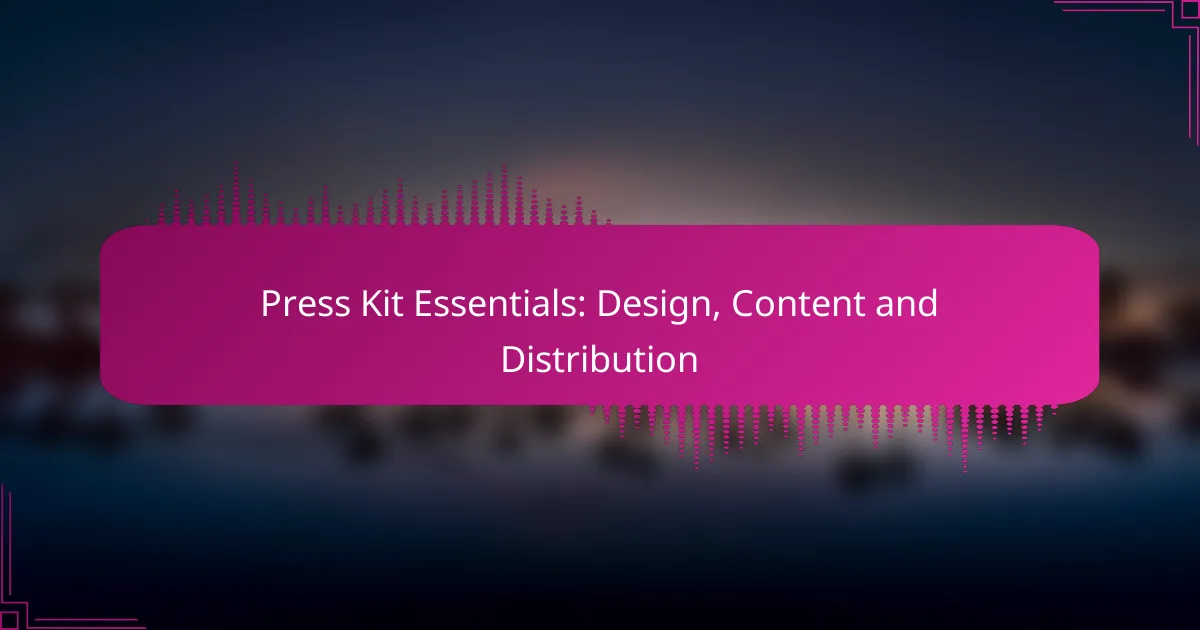A press kit is a vital tool for communicating your company’s identity and news to journalists and media outlets. It should be a well-organized collection of essential materials, including press releases, company backgrounders, and high-resolution images, designed to effectively highlight your brand’s story and offerings. By ensuring your press kit is visually appealing and easy to navigate, you can enhance media engagement and coverage.
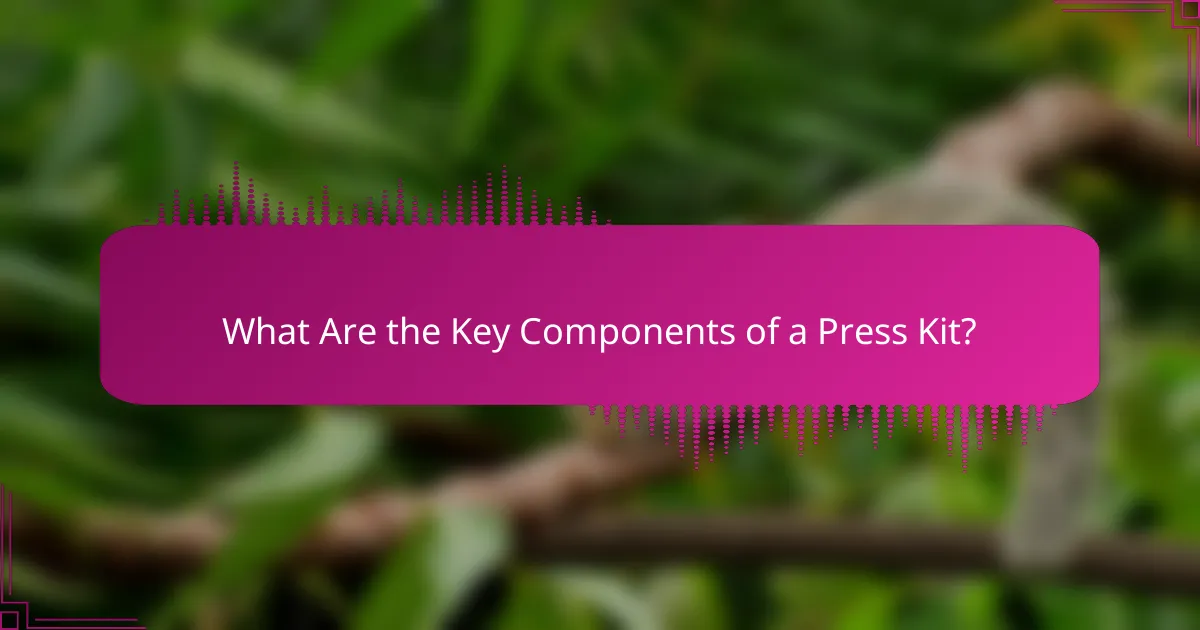
What Are the Key Components of a Press Kit?
A press kit typically includes essential materials that provide journalists and media outlets with information about a company, product, or event. Key components include press releases, company backgrounders, media contact information, high-resolution images, and product information sheets.
Press Release
A press release is a concise, informative document that announces newsworthy events or updates about a company. It should be written in a clear, engaging style and include the who, what, when, where, and why of the announcement.
When crafting a press release, aim for a length of one page, typically around 400-600 words. Ensure it contains a compelling headline, a strong lead paragraph, and quotes from key stakeholders to add credibility.
Company Backgrounder
A company backgrounder provides a detailed overview of the organization, including its history, mission, values, and key achievements. This document helps journalists understand the context and significance of the news being reported.
Keep the backgrounder concise, ideally one to two pages long, and include relevant statistics, milestones, and notable partnerships. Highlight what sets your company apart from competitors.
Media Contact Information
Media contact information is crucial for journalists seeking additional details or interviews. This section should include the name, title, email address, and phone number of the primary media contact.
Make sure this information is up to date and easily accessible. Consider providing multiple contacts if applicable, such as a spokesperson and a public relations representative.
High-Resolution Images
High-resolution images are essential for media coverage, as they enhance visual storytelling. Include professional-quality photos of products, key personnel, and events related to the news.
Provide images in formats such as JPEG or PNG, with a resolution of at least 300 DPI. Ensure that you have the rights to use these images and consider including captions and usage guidelines.
Product Information Sheets
Product information sheets offer detailed descriptions of the products being promoted, including features, benefits, and pricing. These sheets help journalists accurately report on the product and its relevance to the audience.
Keep the information clear and organized, using bullet points for key features and specifications. Include any relevant comparisons to similar products and highlight unique selling points to capture interest.
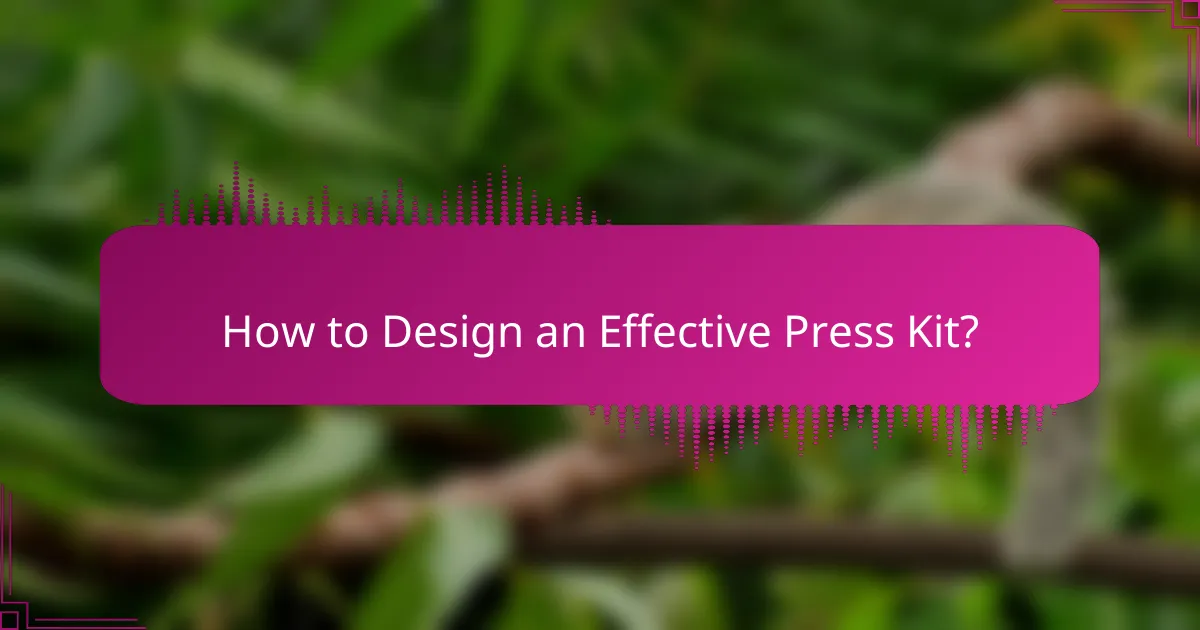
How to Design an Effective Press Kit?
An effective press kit is a well-organized collection of materials that provides essential information about your company or product to journalists and media outlets. It should be visually appealing, easy to navigate, and contain relevant content that highlights your brand’s story and offerings.
Consistent Branding
Consistent branding is crucial for creating a cohesive press kit that reflects your company’s identity. Use your logo, color palette, and typography consistently throughout the materials to reinforce brand recognition. This helps journalists quickly associate the information with your brand.
Ensure that all elements, from the cover page to the press release, maintain the same style and tone. This includes using similar language and messaging that aligns with your brand values. A well-branded press kit can enhance your credibility and make a lasting impression.
Clear Layout
A clear layout is essential for guiding readers through your press kit. Organize content logically, using headings and subheadings to break up sections. This allows journalists to find the information they need quickly, which is vital in a fast-paced media environment.
Consider using bullet points or numbered lists for key facts, such as product features or company milestones. Aim for a clean design with ample white space to avoid overwhelming the reader. A clutter-free layout enhances readability and keeps the focus on your message.
Engaging Visuals
Engaging visuals can significantly enhance the appeal of your press kit. Incorporate high-quality images, infographics, and videos that illustrate your brand story and product features. Visuals can capture attention and convey information more effectively than text alone.
When selecting visuals, ensure they are relevant and support the narrative of your press kit. Use captions to provide context and make sure all images are optimized for web use to ensure fast loading times. Engaging visuals not only attract interest but also help in retaining the information presented.
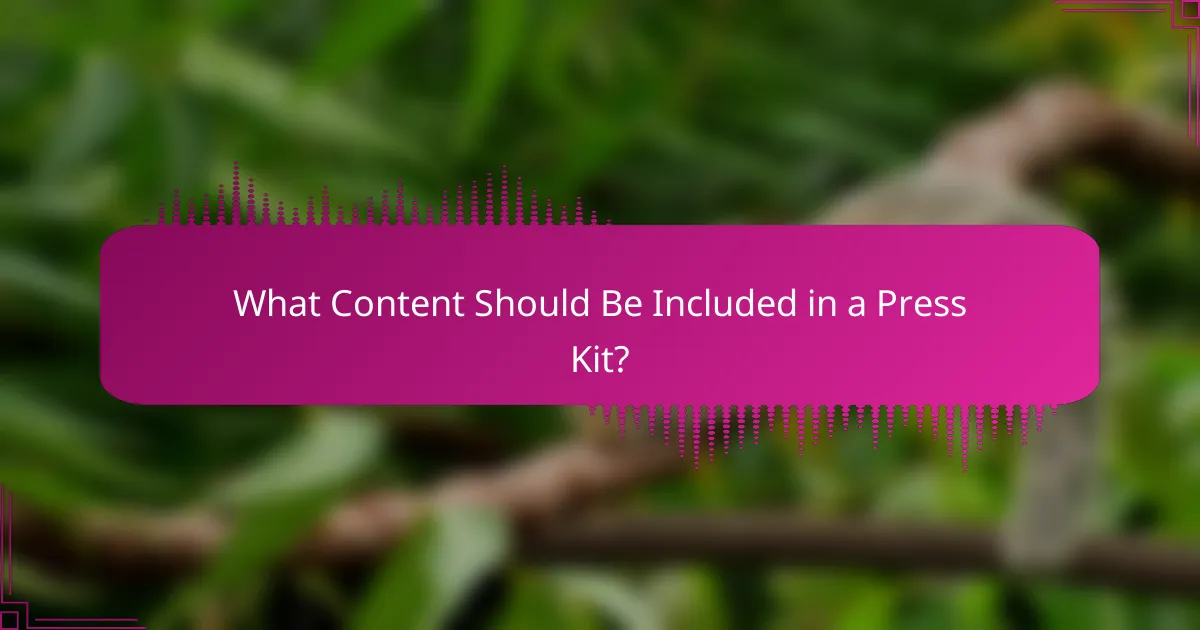
What Content Should Be Included in a Press Kit?
A press kit should include essential information that effectively communicates your company’s identity and news to media representatives. Key components include a company overview, key messages, and recent updates, all of which help journalists understand your brand and its current initiatives.
Company Overview
The company overview provides a concise summary of your business, including its mission, history, and core values. This section should highlight what sets your company apart from competitors and establish its relevance in the industry.
Include key details such as the founding year, major milestones, and any awards or recognitions received. This information helps journalists quickly grasp the essence of your brand and its significance in the market.
Key Messages
Key messages are the main points you want to convey about your company and its offerings. These should be clear, consistent, and tailored to resonate with your target audience.
Focus on 3-5 core messages that encapsulate your brand’s value proposition, unique selling points, and any important initiatives. This clarity ensures that journalists can accurately represent your brand in their coverage.
Recent News and Updates
This section should include the latest press releases, product launches, or significant company developments. Keeping this information current is crucial for engaging media interest and providing timely content.
Consider including a timeline of recent events or a brief summary of each update. This allows journalists to quickly identify noteworthy stories and developments that may be relevant to their audience.
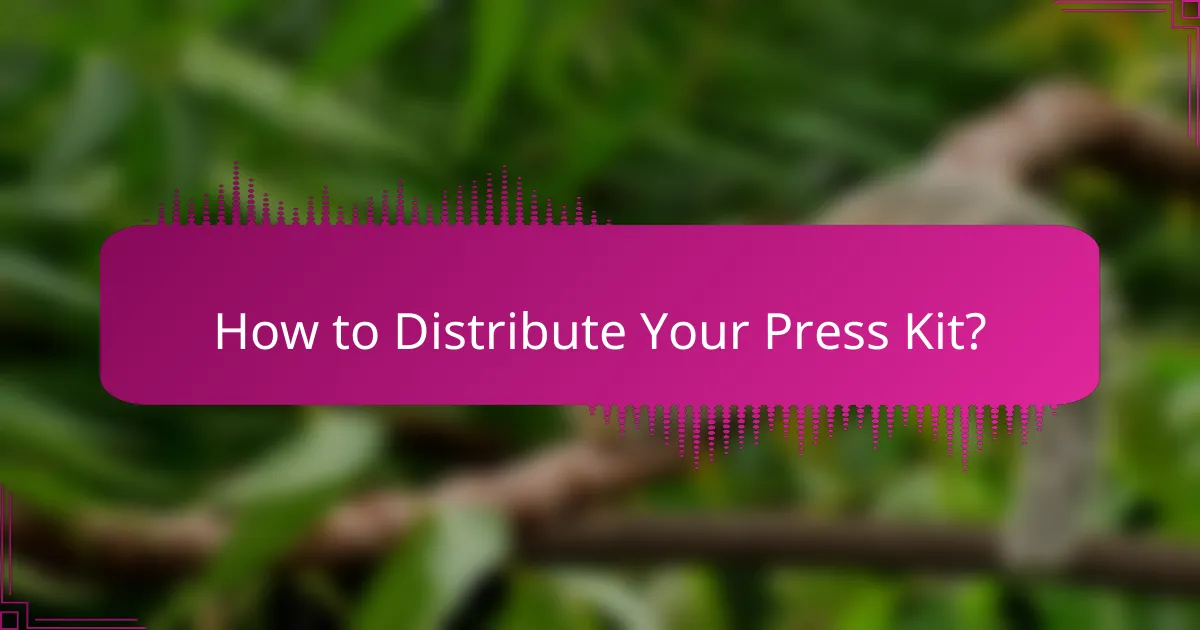
How to Distribute Your Press Kit?
Distributing your press kit effectively ensures that journalists and media outlets can easily access your information. Key methods include email outreach, website uploads, and utilizing professional PR distribution services.
Email Distribution to Journalists
Emailing your press kit directly to journalists is a personalized approach that can yield strong results. Begin by compiling a targeted list of journalists who cover your industry or niche, ensuring that your email is tailored to their interests.
Include a brief, engaging subject line and a concise message that highlights the key points of your press kit. Attach the press kit as a PDF or provide a link to a downloadable version, ensuring it is easily accessible.
Upload to Company Website
Hosting your press kit on your company website makes it readily available for journalists and interested parties. Create a dedicated press page that includes your press kit, high-resolution images, and recent press releases.
Ensure that the page is easy to navigate and optimized for search engines. Use clear labels and descriptions for each file, and consider including a contact form for inquiries to streamline communication.
Utilize PR Distribution Services
PR distribution services can amplify your press kit’s reach by sending it to a wide network of journalists and media outlets. These platforms often have established relationships with various media channels, increasing the likelihood of coverage.
When selecting a service, consider factors such as pricing, distribution reach, and additional features like analytics. Popular options include PR Newswire and Business Wire, which can help you track engagement and responses to your press kit.
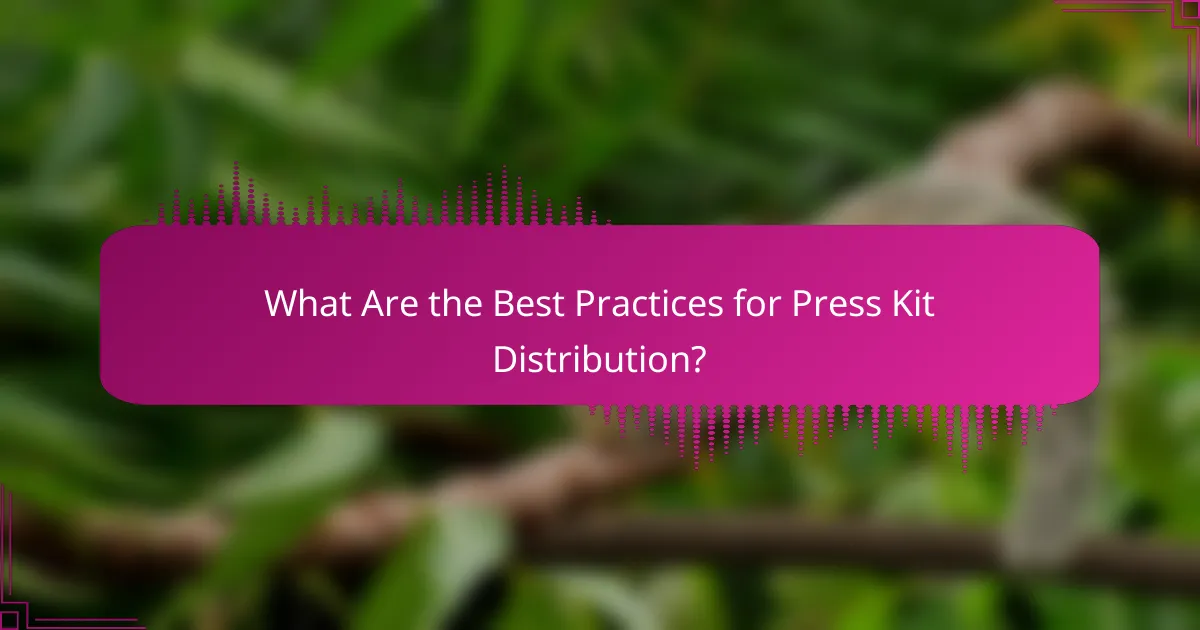
What Are the Best Practices for Press Kit Distribution?
Effective press kit distribution involves targeting the right media outlets, timing your release appropriately, and ensuring your content is relevant to current events. By following best practices, you can maximize visibility and engagement with your press materials.
Targeted Media Lists
Creating targeted media lists is crucial for successful press kit distribution. Focus on identifying journalists, bloggers, and influencers who cover topics related to your industry or niche. Use tools like media databases or social media platforms to find contacts who are likely to be interested in your story.
When compiling your list, consider factors such as audience demographics, publication reach, and previous coverage. Aim for a mix of large publications and niche outlets to broaden your potential impact. Regularly update your media list to ensure accuracy and relevance.
Timing and Relevance
Timing plays a significant role in the effectiveness of your press kit distribution. Release your press kit when it aligns with relevant news cycles, industry events, or product launches to enhance interest. For instance, if your company is launching a new product, distribute your press kit a few days before the launch to build anticipation.
Additionally, monitor current events and trends to ensure your press kit remains relevant. Tailor your messaging to reflect ongoing discussions in the media, which can increase the likelihood of coverage. Avoid sending press kits during major holidays or events when journalists may be less available to respond.
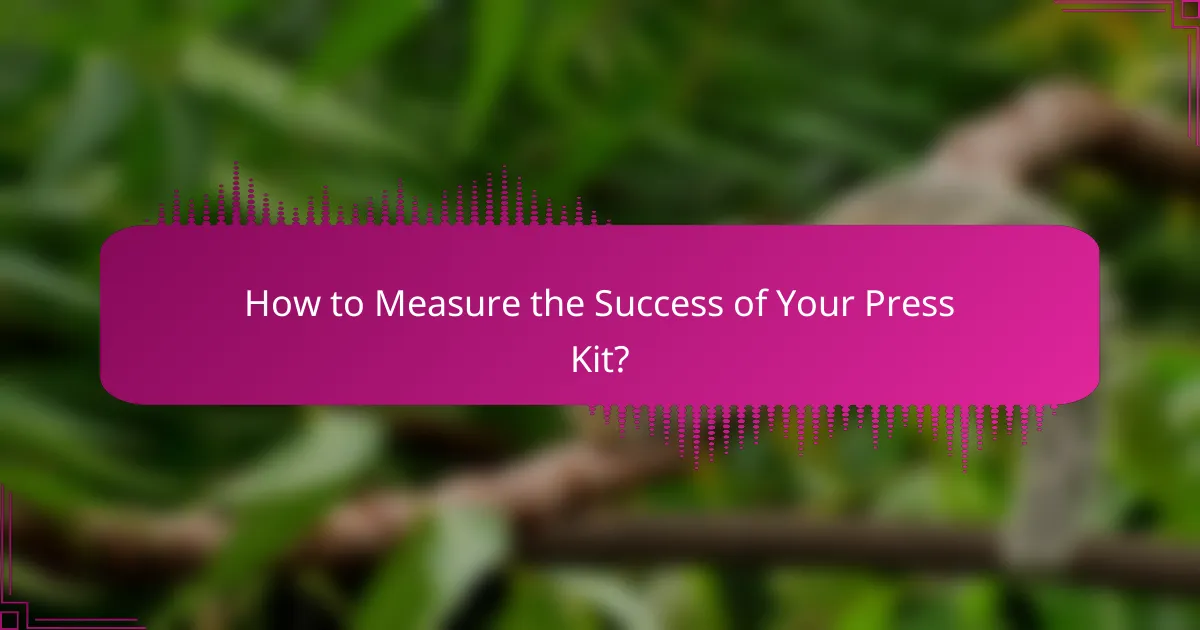
How to Measure the Success of Your Press Kit?
To measure the success of your press kit, focus on key performance indicators (KPIs) such as media coverage, audience engagement, and feedback from journalists. Analyzing these metrics will help you understand the effectiveness of your press kit in reaching and influencing your target audience.
Media Coverage Analysis
Media coverage analysis involves tracking how often your press kit is mentioned in articles, blogs, and broadcasts. Use tools like Google Alerts or media monitoring services to gather data on mentions and assess the quality of the coverage. Aim for a mix of local and national outlets to ensure broad exposure.
Consider the sentiment of the coverage as well. Positive mentions can enhance your brand image, while negative ones may require a strategic response. A simple checklist for media coverage could include the number of articles, the reach of those publications, and the tone of the coverage.
Audience Engagement Metrics
Audience engagement metrics provide insight into how your target audience interacts with your press kit. Monitor website traffic, social media shares, and downloads of the press kit. Tools like Google Analytics can help you track these metrics effectively.
Engagement can also be gauged through direct feedback, such as comments or inquiries from journalists and influencers. High engagement rates indicate that your press kit resonates well with your audience, while low rates may suggest a need for content improvement.
Feedback from Journalists
Gathering feedback from journalists is crucial for refining your press kit. Reach out to media contacts who received your kit and ask for their thoughts on its content and usability. This can be done through follow-up emails or informal conversations.
Pay attention to common themes in their feedback. If multiple journalists mention the need for more visuals or clearer messaging, consider making those adjustments. Keeping an open line of communication with media professionals can lead to better future collaborations and improved press kit effectiveness.
